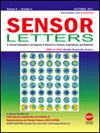Self Assembled Monolayers and Carbon Nanotubes: A Significant Tool’s for Modification of Electrode Surface
引用次数: 1
Abstract
A compromising and well-organized model system is needed for investigating the molecular behaviour of biomolecules as many transduction processes and biological recognition occur at biological surfaces. The application of techniques in interfacial surfaces like one molecule thick films has made a feasible and significant tool for modern scientific studies. Self Assembling Monolayers (SAMs) technology is a very useful means for producing monomolecular films of various biological molecules on different substrates. Carbon Nanotubes (CNTs) have length-to-diameter aspect ratio property which provides a large surface-to-volume ratio, making it an intensely capable material for biomolecular attachments. The incorporation of Carbon Nanotubes (CNTs) with biological systems forming functional assemblies has shown an explored area of research. Organo-sulfur mainly alkanethiol (CnH2n+1–SH) molecules get adsorbed onto CNTs. This phenomenon has grabbed a lot of attention because Self Assembling Monolayers (SAMs) of organo-sulfur compound acts as an example system for understanding important chemical, physical or biological processes.自组装单层膜和碳纳米管:电极表面修饰的重要工具
由于许多转导过程和生物识别发生在生物表面,因此需要一个折衷且组织良好的模型系统来研究生物分子的分子行为。该技术在单分子厚膜等界面表面的应用为现代科学研究提供了一种可行而重要的工具。自组装单层膜(SAMs)技术是在不同底物上制备各种生物分子单分子膜的一种非常有用的手段。碳纳米管(CNTs)具有长径比特性,具有较大的表面体积比,是一种具有很强的生物分子附着能力的材料。碳纳米管(CNTs)与生物系统形成功能组件的结合已显示出一个探索的研究领域。有机硫主要是烷硫醇(CnH2n+ 1-SH)分子被吸附到碳纳米管上。这一现象引起了人们的广泛关注,因为有机硫化合物的自组装单层(sam)作为理解重要化学,物理或生物过程的示例系统。
本文章由计算机程序翻译,如有差异,请以英文原文为准。
求助全文
约1分钟内获得全文
求助全文
来源期刊

Sensor Letters
工程技术-电化学
自引率
0.00%
发文量
0
审稿时长
6 months
期刊介绍:
The growing interest and activity in the field of sensor technologies requires a forum for rapid dissemination of important results: Sensor Letters is that forum. Sensor Letters offers scientists, engineers and medical experts timely, peer-reviewed research on sensor science and technology of the highest quality. Sensor Letters publish original rapid communications, full papers and timely state-of-the-art reviews encompassing the fundamental and applied research on sensor science and technology in all fields of science, engineering, and medicine. Highest priority will be given to short communications reporting important new scientific and technological findings.
 求助内容:
求助内容: 应助结果提醒方式:
应助结果提醒方式:


